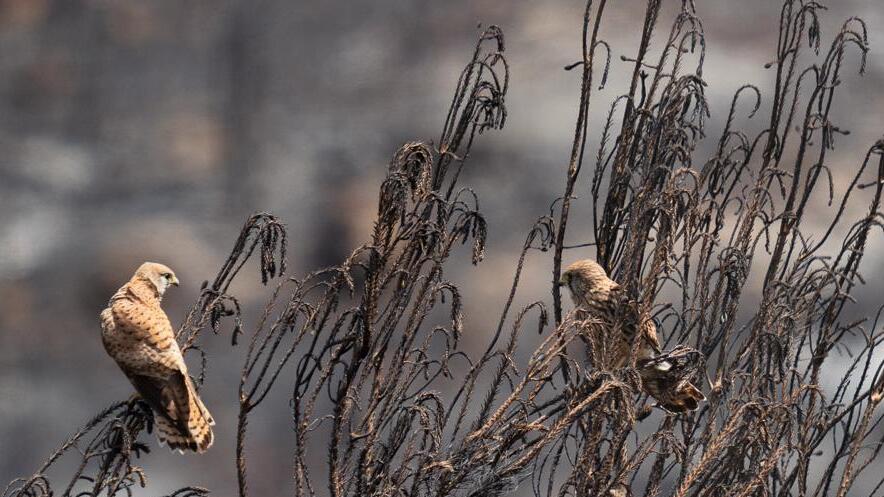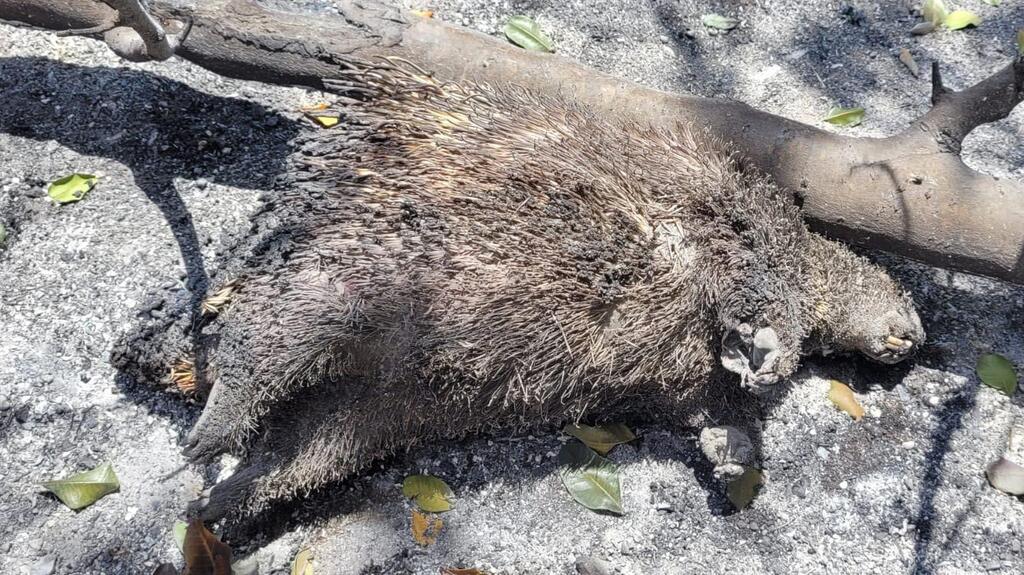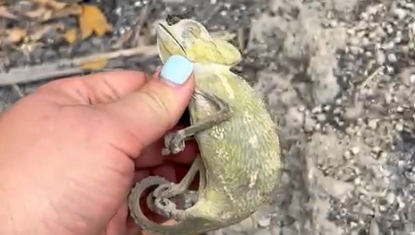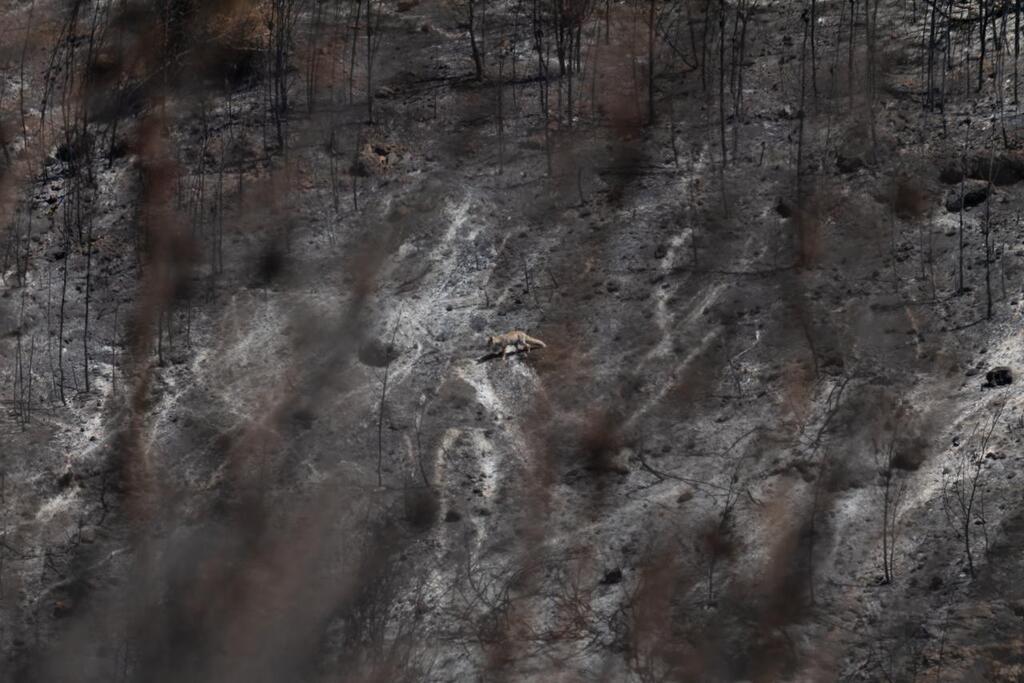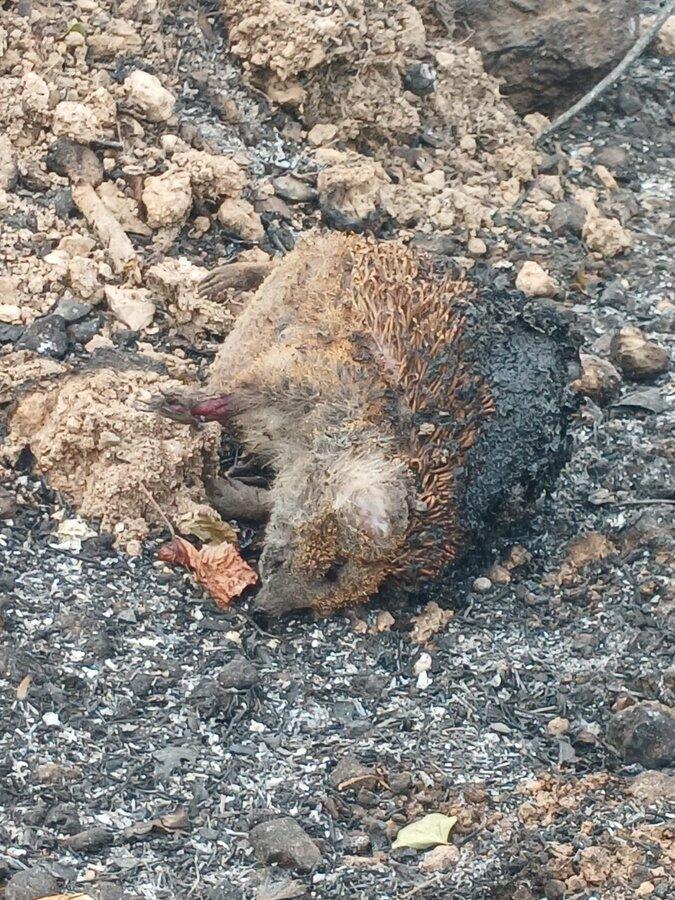The massive wildfire that swept through the Jerusalem hills this week scorched some 20,000 dunams (nearly 5,000 acres) of forest and open land. While the environmental damage is visible, the toll on wildlife is becoming evident only up close.
As the fire broke out and spread, large mammals and birds managed to flee the flames, as did livestock like cows grazing in the area. But many reptiles, as well as smaller mammals like foxes, jackals, hedgehogs and porcupines, did not escape. Compounding the impact, the fire erupted during peak nesting season for honey buzzards and other birds, making it likely that many nests were destroyed.
On Friday, volunteers from the nonprofit organization Safe Passage for Wildlife surveyed the burned areas and documented the extent of the damage. The group promotes solutions to prevent roadkill and protect animal habitats.
Maya Sigal, the organization’s director, said the team searched areas around Neve Ilan and Latrun, looking for injured animals or surviving young. “We found nothing but carcasses — jackals, porcupines, and countless chameleons and reptiles,” she said. “It shows how intense the fire was, that even mammals couldn’t get away.”
Sigal noted that obstacles such as barbed wire fences likely made it even harder for wildlife to escape.
Jewish National Fund wildlife photographer Bonnie Scheinman also documented the damage. One of her images shows two young common kestrels that had recently fledged. Another photo shows an adult male kestrel standing on the scorched ground — likely hunting for insects driven out by the fire, but appearing to gaze somberly across the blackened landscape.
Yaron Charka, JNF’s chief ornithologist, explained that while birds can usually escape fires by flying away, the timing of this blaze poses a serious threat. “We’re in the height of nesting season,” he said. “Many species nest in the Jerusalem forests, especially honey buzzards. They winter in Africa and start nesting here in early March. By late April and early May, their nests hold eggs.”
“There are many nests in the Eshtaol Forest area,” Charka said. “We’ve conducted extensive nesting surveys there and I’ve seen numerous nesting pairs in recent weeks. I have no doubt that many of those nests were destroyed.” He added that while a second nesting cycle is technically possible, it’s harder to raise chicks in the hotter months ahead. “I hope some succeed,” he said.
Get the Ynetnews app on your smartphone: Google Play: https://bit.ly/4eJ37pE | Apple App Store: https://bit.ly/3ZL7iNv
Other species nesting in the area include songbirds like the European turtle dove — a bird already in steep population decline — as well as the Sardinian warbler and nocturnal raptors like scops owls and barn owls. “Ultimately, habitat destruction is the leading driver of biodiversity loss,” Charka warned. “In a small, densely populated country like Israel, where natural habitats and open spaces are already shrinking, the damage can be immense.”
“Both reptiles and small mammals are affected,” he said. “These areas are incredibly precious, and every dunam lost is a huge blow to biodiversity. When 20,000 dunams go up in flames, it’s a devastating loss. It’s heartbreaking.”



